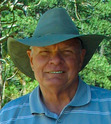Evan E. Filby's Blog: South Fork and More, page 87
March 3, 2016
Commission Created to Oversee Idaho Capitol Construction [otd 03/03]
On March 3, 1905 Governor Frank Gooding signed an Act to create a "Capitol Building Board." For some years prior to this, state officers and citizens had begun to find the old Territorial capitol building inadequate to the needs of a new and growing state.
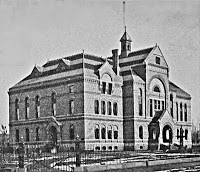 Old Territorial/State capitol building, ca 1898.
Old Territorial/State capitol building, ca 1898.
Illustrated History of the State of Idaho.
Before 1884, the Territorial legislature apparently met in various hotels where they could find enough rooms, and Territorial offices were at scattere...
 Old Territorial/State capitol building, ca 1898.
Old Territorial/State capitol building, ca 1898.Illustrated History of the State of Idaho.
Before 1884, the Territorial legislature apparently met in various hotels where they could find enough rooms, and Territorial offices were at scattere...
Published on March 03, 2016 00:10
March 2, 2016
Hatch Act of 1887 Authorizes Agricultural Experiment Stations [otd 03/02]
On March 2, 1887, the U. S. Congress approved the Hatch Act of 1887. The Act authorized grants to support agricultural experiment stations in the states. In most cases, such stations would be set up and administered by the "land grant" colleges spurred by the Morrill Act of 1862.
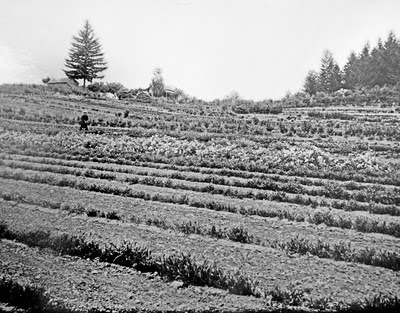 Agricultural experiment plots. Library of Congress.In Idaho, leaders established an on-campus experiment station at the University of Idaho (UI) even before classes began – although several years passed before they ha...
Agricultural experiment plots. Library of Congress.In Idaho, leaders established an on-campus experiment station at the University of Idaho (UI) even before classes began – although several years passed before they ha...
 Agricultural experiment plots. Library of Congress.In Idaho, leaders established an on-campus experiment station at the University of Idaho (UI) even before classes began – although several years passed before they ha...
Agricultural experiment plots. Library of Congress.In Idaho, leaders established an on-campus experiment station at the University of Idaho (UI) even before classes began – although several years passed before they ha...
Published on March 02, 2016 00:03
March 1, 2016
President Ulysses S. Grant Creates Yellowstone National Park [otd 03/01]
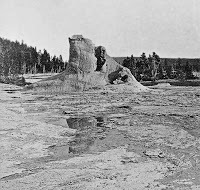 Geyser cone, Fire Hole Basin, 1871.
Geyser cone, Fire Hole Basin, 1871.W. H. Jackson photo, Library of Congress.On March 1, 1872, President U. S. Grant signed the bill that authorized creation of Yellowstone National Park.
As far back as 1825, American fur trappers had become familiar with the geothermal wonders of this area. It has been established, however, that "Colter's Hell" – first reported by Mountain Man John Colter – was east of the future Park.
In August of 1836, Mountain Man Osborne Russell [blog, Dec 20] trapped many...
Published on March 01, 2016 00:06
February 29, 2016
Idaho Territory Fends Off One Last Partition Attempt [otd 02/29]
On February 29, 1888, Congressional Delegate Fred T. Dubois sent the following telegram to Milton Kelly: “House committee on territories to-day reported unanimously against any division of Idaho. This ends the fight.”
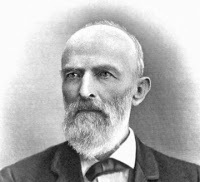 Judge Kelly. Illust-State photo.Milton Kelly was the operator-editor of the Idaho Statesman, published in Boise. He was born near Syracuse, New York, in 1818. He became a lawyer in 1845 and practiced for many years in Wisconsin. Kelly moved to Placerville, Idaho in 1863. He then...
Judge Kelly. Illust-State photo.Milton Kelly was the operator-editor of the Idaho Statesman, published in Boise. He was born near Syracuse, New York, in 1818. He became a lawyer in 1845 and practiced for many years in Wisconsin. Kelly moved to Placerville, Idaho in 1863. He then...
 Judge Kelly. Illust-State photo.Milton Kelly was the operator-editor of the Idaho Statesman, published in Boise. He was born near Syracuse, New York, in 1818. He became a lawyer in 1845 and practiced for many years in Wisconsin. Kelly moved to Placerville, Idaho in 1863. He then...
Judge Kelly. Illust-State photo.Milton Kelly was the operator-editor of the Idaho Statesman, published in Boise. He was born near Syracuse, New York, in 1818. He became a lawyer in 1845 and practiced for many years in Wisconsin. Kelly moved to Placerville, Idaho in 1863. He then...
Published on February 29, 2016 00:11
February 28, 2016
John R. McBride, U. S. Representative and Chief Justice for Idaho Territory [otd 02/28]
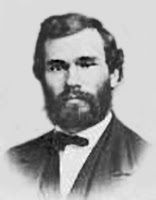 Judge McBride.
Judge McBride.Photo from findagrave.comOn February 28, 1865, President Abraham Lincoln – just 45 days before he was shot by John Wilkes Booth – appointed John Rogers McBride as Chief Justice of the Supreme Court of Idaho Territory. The appointment typified the patronage system of the times, but the result turned out to be a happy exception to the norm.
Although Territorial governance followed the same structure as the Federal system, voters in the Territory had no say over the executive and ju...
Published on February 28, 2016 00:05
February 27, 2016
Pocatello Brewer and Soft Drinks Bottler Robert Hayes [otd 02/27]
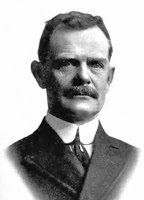 Robert Hayes.
Robert Hayes.J. H. Hawley photo.Pocatello businessman Robert J. Hayes was born February 27, 1861 in Oswego, New York. The family moved to Chicago about six years later. Hayes struck out on his own at age sixteen, making his way west by “night herding” – tending draft animals – for a freight outfit. He then landed a job with the Union Pacific Railroad, first in Cheyenne, Wyoming, then in Rawlins.
After three years of that, Hayes returned to night herding, working for a freight line that operat...
Published on February 27, 2016 00:07
February 26, 2016
Idaho Supreme Court Justice George Stewart [otd 02/26]
Idaho Supreme Court Justice George Harlan Stewart was born February 26, 1858 in Connersville, Indiana, about fifty miles east of Indianapolis. He was something of an intellectual prodigy: George leaped through a “common” education to himself teach at country schools.
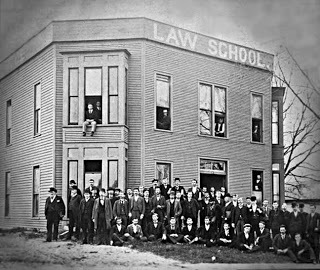 Law School at Valparaiso, ca 1880. Valparaiso University Archives.
Law School at Valparaiso, ca 1880. Valparaiso University Archives.
After several years, he entered Northern Indiana Normal school, in Valparaiso. (In 1900, the school became Valparaiso College, now University.)
George completed thei...
 Law School at Valparaiso, ca 1880. Valparaiso University Archives.
Law School at Valparaiso, ca 1880. Valparaiso University Archives.After several years, he entered Northern Indiana Normal school, in Valparaiso. (In 1900, the school became Valparaiso College, now University.)
George completed thei...
Published on February 26, 2016 00:05
February 25, 2016
Six Miners Killed in Sudden Mining District Fire [otd 02/25]
On Tuesday, February 25, 1902, about three o'clock in the morning, the residents of the connected Standard Boarding and Lodging houses slept quietly. Most of them worked for the Standard Mine, located on Canyon Creek, about five miles northeast of Wallace, Idaho.
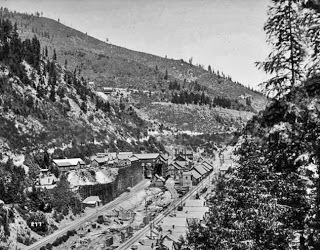 Standard Mine, ca. 1910. University of Idaho archives.
Standard Mine, ca. 1910. University of Idaho archives.
Placer miners prospected Canyon Creek for gold in 1884. However, as happened for many Coeur d’Alene strata, they failed to note the valuable lead-silver lodes buried in these ridge...
 Standard Mine, ca. 1910. University of Idaho archives.
Standard Mine, ca. 1910. University of Idaho archives.Placer miners prospected Canyon Creek for gold in 1884. However, as happened for many Coeur d’Alene strata, they failed to note the valuable lead-silver lodes buried in these ridge...
Published on February 25, 2016 00:05
February 23, 2016
Rancher, Attorney, and Idaho Chief Justice Alfred Budge [otd 02/24]
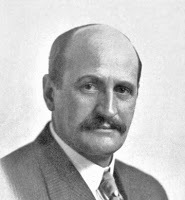 Judge Alfred Budge.
Judge Alfred Budge.H. T. French photo.Alfred Budge, Chief Justice of the Idaho Supreme Court, was born February 24, 1868 in Providence, Utah, just south of Logan.
Two years later, the family moved to Paris, Idaho, where his father William played a prominent role in the Mormon Church as well as in Idaho politics. William served two terms in the Territorial legislature and, in 1899, was elected to the state Senate.
Alfred attended preparative academies in Logan and Provo, Utah, before entering...
Published on February 23, 2016 23:20
Chinook Thaw Floods Lower Clearwater and Other Rivers in the Region [otd 02/23]
The Lewiston Teller newspaper reported that on Sunday, February 23, 1879, "a regular Chinook visited us." The report provided no firm numbers, but the notorious Chinook wind can raise air temperatures by as much as 50-60ºF in a matter of hours.
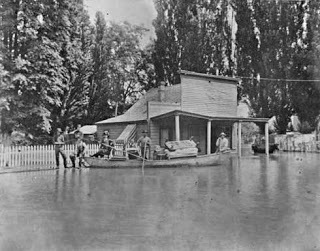 Low ground flooded in Lewiston, ca. 1890.
Low ground flooded in Lewiston, ca. 1890.
U.S. Army Corps of Engineers.
In the day or so before, warm air had moved in from the coast. West of Lewiston, gushers from thawing in the high ground quickly raised the level of the Snake River. At the same time...
 Low ground flooded in Lewiston, ca. 1890.
Low ground flooded in Lewiston, ca. 1890.U.S. Army Corps of Engineers.
In the day or so before, warm air had moved in from the coast. West of Lewiston, gushers from thawing in the high ground quickly raised the level of the Snake River. At the same time...
Published on February 23, 2016 00:04
South Fork and More
As an author's vehicle, this blog will include my thoughts on the writing process, supplemental information about my books, and "status"updates on current projects.
My long-time blog -- the South Fork As an author's vehicle, this blog will include my thoughts on the writing process, supplemental information about my books, and "status"updates on current projects.
My long-time blog -- the South Fork Companion -- leans heavily toward Idaho history. In particular, I post an "On This Day" (OTD) item with an Idaho "spin" for every day of the year. I originally tried to have the system bring over the entire item, but the transfer does not handle the photo captions well. That's not good, because I generally include two images with each of my OTD posts. ...more
My long-time blog -- the South Fork As an author's vehicle, this blog will include my thoughts on the writing process, supplemental information about my books, and "status"updates on current projects.
My long-time blog -- the South Fork Companion -- leans heavily toward Idaho history. In particular, I post an "On This Day" (OTD) item with an Idaho "spin" for every day of the year. I originally tried to have the system bring over the entire item, but the transfer does not handle the photo captions well. That's not good, because I generally include two images with each of my OTD posts. ...more
- Evan E. Filby's profile
- 2 followers


